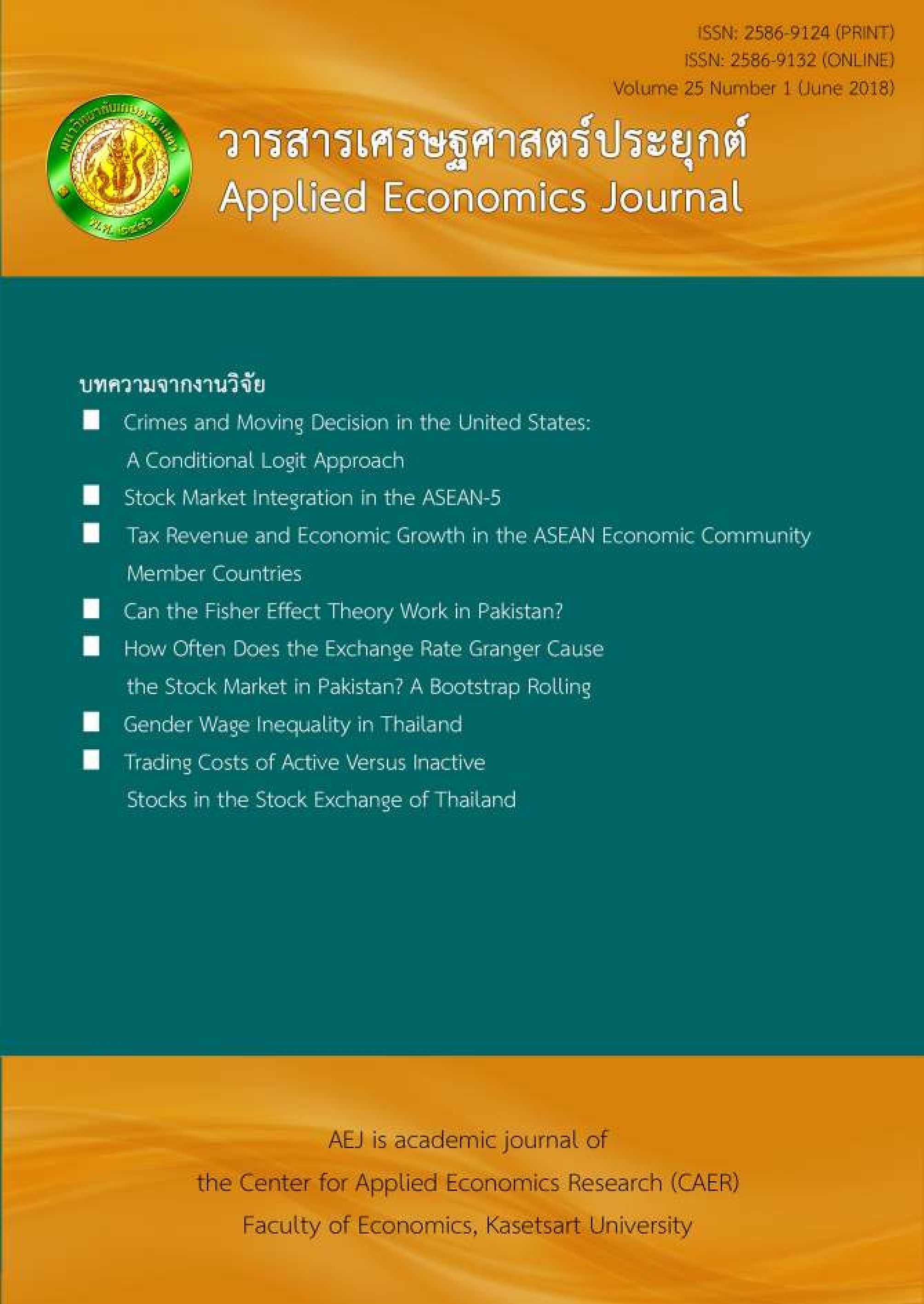Tax Revenue and Economic Growth in the ASEAN Economic Community Member Countries
Main Article Content
Abstract
This study examines the relationship between tax revenue and economic growth in the ASEAN economic community member countries. Estimations use the annual data during 1990-2014 for a total of 25 years from 9 countries. The model is estimated by the Generalized Method of Moments (GMM) based on the concept of Arellano and Bond. The results show that tax revenue has a statistically significant and negative effect on economic growth in the ASEAN economic community member countries. Because taxation is a transfer of some resources from the private sector to the public sector and most of the members of the ASEAN economic community have not very high level of national income. The resources of the private sector are reduced when the proportion of tax revenue to gross domestic product increased. This leads to a decrease in private consumption, savings and investment. Similarly, taxes on income, profit and capital gains or distortionary taxes have statistically significant and negative effects on economic growth in the ASEAN economic community member countries. It is because taxes on income, profit and capital gains make revenue after tax of taxpayers decrease. As the result, consumption, savings, investment and gross domestic product will decrease.
Article Details
The paper is published under CC BY-NC-ND, in which the article is freely downloaded and shared in its original form non-commercially and its citation details are identified.


